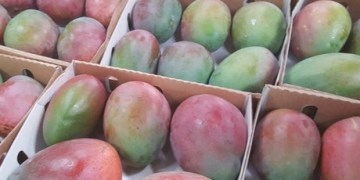At dawn in Makueni, you can smell the paradox before you see it. Mangoes, split and overripe, carpet the red earth beneath their trees.
Acres of yellow sweetness fermenting in the sun, feeding goats, fruit flies, and a few children with sugar-stained fingers. It is an image of abundance curdling into waste, and it tells the story of Kenyan agriculture with a cruel economy: food enough to nourish millions left to rot, even as hunger gnaws in the many villages where the fruit falls.
According to the World Resources Institute (WRI), up to 40% of harvests vanish in the route from farm to fork. They are bruised in transit, poisoned in poor storage, discounted into invisibility, or simply never plucked from their branches.
Economists call it food loss and waste (FLW). Farmers call it bad luck. In truth, it is a symptom of structural affliction.
In this article
Maize: The Invisible RotPotato: Bruised on the RoadMango: The Export ParadoxBanana: Bruised in the Informal MarketAvocado: Green Gold, Rotten in the FieldThe Food Loss Economy
Maize: The Invisible Rot
Maize is Kenya’s alimentary monarch. It furnishes about one-third of the country’s daily calories and remains as much a political staple as a dietary one. Yet it is prey to an insidious enemy: aflatoxin.
This is caused by poor drying techniques, haphazard storage in jute sacks, and household granaries teeming with pests that lead to up to 36% of the total maize harvest losses along the supply chain.
Although the grain may look whole, golden, fit for ugali, fungal contamination makes it lethal. Acute exposure to aflatoxins can cause hepatitis, liver failure, and death. In 2005, a severe outbreak of the fungal infection caused the death of 125 people who had consumed highly contaminated home-processed maize.
The farmers, lacking proper silos, are also forced to sell quickly after harvest at cut-rate prices, long before scarcity would raise returns. Thus maize demonstrates a particularly Kenyan tragedy where waste is not always measured in spoiled heaps but in silent poison and squandered value.
Potato: Bruised on the Road
If maize is the monarch, potato is its indispensable courtier. It ranks as the second most important crop, grown on over 200,000 hectares, feeding households and fast-food chains alike. In 2023, 2.3 million metric tonnes were harvested, but as they journeyed to market, up to a quarter was lost.
The culprits are almost medieval. Jembes and pangas used to reap them, gash the tubers at harvest. Meanwhile, the losses are exacerbated by the usage of storage sacks that suffocate them and decrepit lorries that rattle them to pulp on cratered roads.
Losses are heaviest at harvest (6–12%) and transport (0.5–8%), while the retail stage adds another bruise (9.3%). Despite the existence of technologies such as ventilated storage, evaporative coolers, and cold rooms that could halve the losses, adoption is low due to farmer poverty and psychology. Most smallholder farmers prefer the quick cash of distress sales to the long game of preservation.
Mango: The Export Paradox
The mango is Kenya’s sun-ripe emblem of both promise and futility as it can fetch premium prices in Europe. However, in local markets, prices collapse into sticky oversupply with total losses swinging between 17 to 56%.
The hemorrhage mostly occurs at retail (18 – 23%) and wholesale (9–15%), where fruit flies, crude harvesting, and seasonal gluts overwhelm traders. In processing plants, 35% of the produce may be discarded, while exports, guarded by strict phytosanitary standards, shed 18% from the supply chain.
Banana: Bruised in the Informal Market
Bananas are ubiquitous and about 95% of them are sold through informal markets such as roadside stalls, bicycles, motorbikes, matatus. Total banana losses stand at 5–11%. In the absence of proper ripening rooms or storage, much of the harvest blackens within days.
The study found the retail stage alone accounted for nearly 10% of quantity losses and almost 12% in economic terms, with damaged bunches fetching up to 60% less in price.
An FAO research underscores the quality problem, citing poor handling (70%), pest damage from banana thrips (30%), premature harvesting (10%) and fruit decay at the pedicel (15%) as persistent causes of waste.
Avocado: Green Gold, Rotten in the Field
Avocado is one of Kenya’s most prized horticultural exports, furnishing markets across Europe and China. At home, it is cursed by glut and neglect. Losses differ starkly by destination. For export chains, guarded by cold storage and strict quality control, losses hover at 15% while those for domestic consumption, the figure soars to 35%.
A study in Nandi found 45% of avocados lost, with 90% of that on-farm, fruit left to rot unharvested when prices collapsed. Elsewhere, harvest damage (20%) and transport bruising (10%) bleed the crop further. Cold chain facilities exist but serve exporters, not accessible for many smallholder farmers who produce over 70% of the crop.
The Food Loss Economy
Food loss in Kenya is not a matter of individual negligence but structural economic malaise. It is the economy of farmers forced to sell maize wet because they cannot afford dryers, of potatoes bounced to ruin on untarmacked roads, and of mangoes that rot because the local juice plant cannot absorb the glut. It is an economy in which waste is systemic and profitless.
Kenya does not starve for lack of food, but mainly because most of it is bruised, poisoned, unpicked, or discarded. Until the country treats loss as seriously as production, its harvests will remain a feast for the flies.
To tackle the problem, the WRI says that the country needs to strengthen its data and monitoring systems to pinpoint exactly where losses occur. Second, stakeholders need to scale up proven technologies such as hermetic storage, cold chains, farmer training and food donation programs.
Finally, the institute urges that stronger policy execution and tighter value chain coordination through county and national strategies, cross-sector collaboration and clear incentives for action will go a long way in reducing harvest losses.


